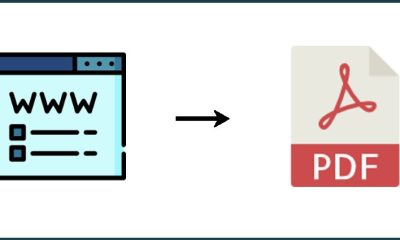Career Tips
How To Create A successful Affiliate Marketing Website

What is an affiliate marketing website?
Affiliate marketing websites offer items or services in exchange for commissions. Marketers develop material for a certain target demographic and include connections to third-party items. When visitors click on these links and buy the products, the affiliate website earns a percentage of the sale. These websites frequently collaborate with affiliate networks, which connect them with related products to market.
How to create a website for affiliate marketing
Here’s how to create a website for affiliate marketing:
1. Establish your niche
- Before you start your website, consider establishing a specialization that will allow it to target to a specific group of people. Ideal niches also have consumers who are willing to purchase many products. Choose a topic that interests you or that you are knowledgeable about, but keep it restricted enough to reduce competition.
- For example, the term “pets” may be rather wide, as it encompasses several affiliate websites. “Persian cat treats” may be very particular, while “cat food” appeals to a wide range of individuals while being quite straightforward. Most significantly, the target audience for a “cat food” website is likely to be ready to purchase items ranging from feeding bowls to kibble.
2. Create a domain name
- A domain name is a memorable URL address that directs visitors to your website. A decent domain name can help you build your brand and attract more visitors. You may wish to include keywords in your domain name to explain your niche and appeal to search engines. You can also be inventive in encouraging visitors to explore more of your website. For example, suppose you chose the domain “felinedining.com” for an affiliate marketing website that specializes in cat food.
3. Choose a web host
- A web host is a platform that hosts your website, fosters cybersecurity, and allows people to access its pages. Consider exploring numerous web servers to pick the one that best fits your budget and tastes. For example, you might want to choose a web host that assists you in obtaining a domain name and offers a content management system for editing your website.
4. Create intent-driven content
- Affiliate marketing websites require content to attract visitors and promote products. After you have created your website using a website, you can begin adding material to it. Consider creating intent-driven content by thinking why people would visit your site. For example, if you run a cat food website, someone may visit to find a healthy diet for their overweight cat. To match the user’s aim, post articles like “5 Foods That Can Help Your Cat Lose Weight” or “How to Create a Weight Reduction Plan for Your Cat.”
5. Establish a sales funnel
- The next stage is to build a sales funnel around a user’s purpose and the material you write. Consider the “How To Create a Weight Reduction Plan for Your Cat” example article in Step 4. When a visitor comes to this page, you can ask them to join your mailing list in exchange for a downloadable meal plan PDF. Later, you can send emails to assist them in further reducing their cat’s weight. These beneficial offerings illustrate that your website provides helpful solutions to consumer problems, which increases trust in your future product suggestions.
6. Create other specific sales funnels
- You can develop new sales funnels based on different user intents. For example, visitors to your cat food website may have goals other than helping their cat lose weight. Other goals could include developing an organic diet for their cat or studying automatic feeders for when their animals are at home alone. Try to constantly research user intentions and write relevant blog content.
7. Promote your website
- You may be able to acquire organic traffic from search engines if you employ keywords and post material on a regular basis. You may increase the amount of website visitors even more by advertising your content on social media and launching email campaigns. You may even pay for search engine and social media ads, as commissions can eventually cover the expense of sponsored marketing campaigns.
8. Join a trustworthy affiliate program
- You may be able to acquire organic traffic from search engines if you employ keywords and post material on a regular basis. You may increase the amount of website visitors even more by advertising your content on social media and launching email campaigns. You may even pay for search engine and social media ads, as commissions can eventually cover the expense of sponsored marketing campaigns.
Many businesses use unique marketing tactics to boost sales, with affiliate marketing being one of the most popular. This technique involves third-party websites earning commissions for recommending products. Understanding how to set up an affiliate marketing website will help you increase page traffic and earn passive money.
Tips for creating an affiliate marketing website
1. Use a link cloaker
Link cloaking is the process of transforming messy affiliate links into more appealing URLs. For example, your affiliate program may provide you with a link to track visitors who purchase a specific type of cat food, such as example.com/?clickid123456.
Users may be hesitant to click on this link, but using a link cloaker, you can construct a brand-friendly URL such as felinedining.com/cat-food. Link cloakers also allow you to track how many sales the company generates through your link and prevent fraudulent actors from taking your commissions.
2. Add disclosures
The FTC requires affiliate websites to include information about the products they promote. It’s best to clearly disclose that you receive commissions on any page that contains an affiliate link. Being transparent allows you to comply with federal legislation and fosters trust among your visitors.
3. Promote discount codes
Consider examining your affiliate network for firms that provide discount codes. Promoting these vouchers can increase visitors’ willingness to test new products. You can distribute these discount codes using your website, social media profiles, and email campaigns.












